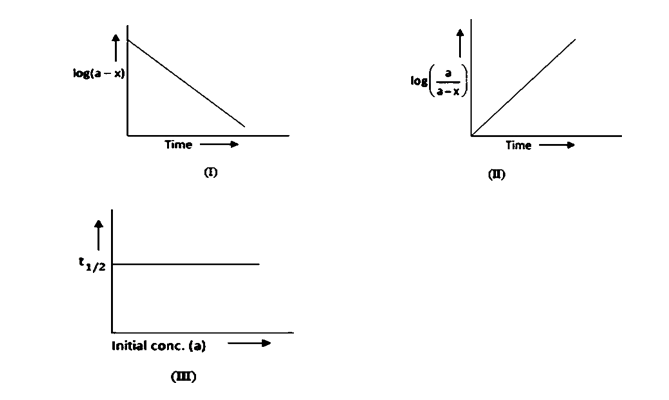In a second order reaction, first order in each reactant A and B, which one of the following reactant mixtures will provide the highest initial rate?Solution in Bengali
0.1 mol of A and 0.1 mol of B in 0.1 litre solvent
0.2 mol of A and 0.2 mol of B in 0.1 litre solvent
1.0 mol of A and 1.0 mol of B in 1.0 litre solvent
0.1 mol of A and 0.1 mol of B in 0.2 litre solvent
The correct Answer is:B
Step by step video, text & image solution for In a second order reaction, first order in each reactant A and B, which one of the following reactant mixtures will provide the highest initial rate? by Chemistry experts to help you in doubts & scoring excellent marks in Class 12 exams.
Topper's Solved these Questions
Similar Questions
Which has higher conductance and why? Silver wire at 30∘C or silver wire at 50∘C?
03:41View SolutionIn a second order reaction, first order in each reactant A and B, which one of the following reactant mixtures will provide the highest initial rate?
02:16View SolutionIn a first order reaction the concentration of the reactant is reduced to one-fourth of its initial value in 50 seconds. Cacluate the rate constant the reaction
03:08View SolutionStatement-2: The reciprocal of time in which 66% of the reactant is conveted to product is equal to the rate constant of first order reaction.
Because
Stetment-2 : The rate constant for first order reaction depends on initial concentration of reactants.01:50View SolutionA reaction of first order with respect to reactant A and second order with respect to reactant B. the rate law for the reaction is given by
03:49View SolutionWhich of the following is/are correct for the first order reaction ? (a is initial concentration of reactant, x is concentration of the reactant reacted and t is time)
 02:02View Solution
02:02View SolutionIf the concentration of the reactants is increased, the rate of reaction for first order-
04:37View SolutionIn a first order reaction A → B, if k is rate constant and initial concentration of the reactant A is 2 M then the half life of the reaction is:
01:27View SolutionA reaction is first order with respect to the reactant A and second order with respect to the reactant B in a reaction A+B→ product
Write the differential rate equation.05:25View SolutionWhich of the following graphs represent a first order reaction (a=initial concentration of reactant, x=concentration of reactant consumed, t=time)
04:08View SolutionA reaction is first order with respect to reactant A and second order with respect to reactant B in a reaction A+B→ product.
i) Write the differential rate equation.
ii) How is the rate of the reaction affected on increasing the concentration of B by two times?03:21View SolutionA reaction is first order with respect to reactant A and second order with respect to reactant B. The rate law for the reaction is given by
02:06View SolutionIf the concentration of the reactants is increased, the rate of reaction for first order-
04:02View SolutionIn a first order reaction A to B, if k is rate constant and initial concentration of the reactant A is 2 M then the half life of the reaction is:
06:26View SolutionWhich of the following is/are correct for the first order reaction ? (a is initial concentration of reactant, x is concentration of the reactant reacted and t is time)
01:57View Solution

